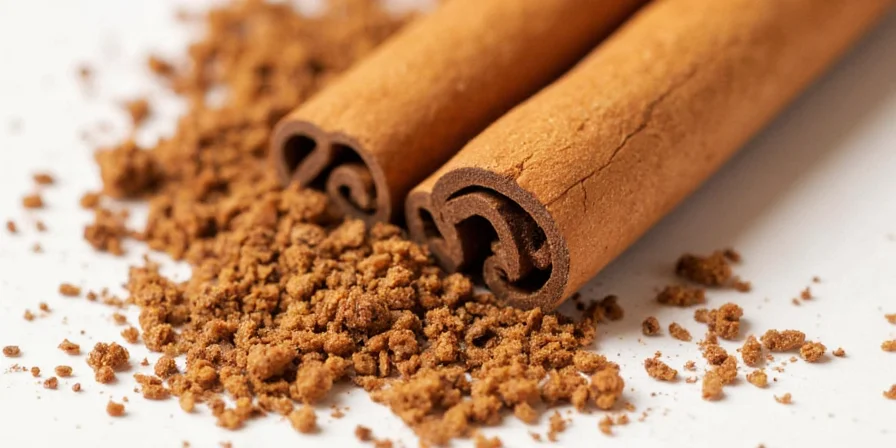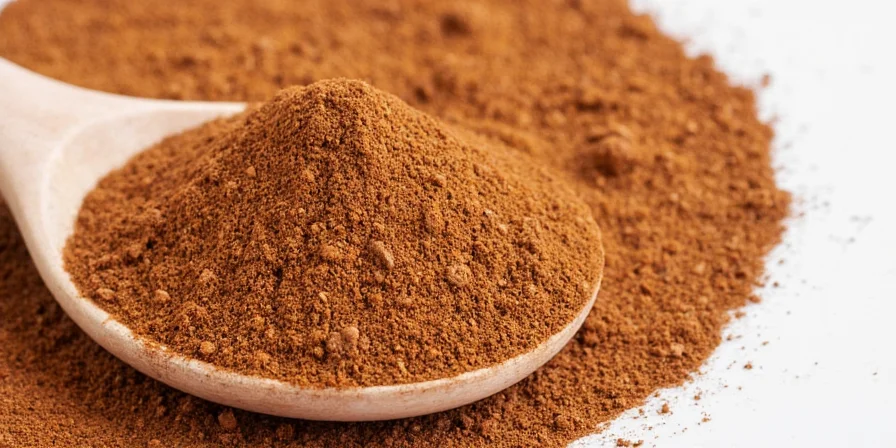Ceylon cinnamon vs. Cassia cinnamon: Understanding the critical differences between these two varieties is essential for both culinary excellence and health safety. Ceylon cinnamon (Cinnamomum verum), often called “true cinnamon,” originates exclusively from Sri Lanka and contains 99% less coumarin than Cassia cinnamon (Cinnamomum cassia) from China and Indonesia. This comprehensive guide explains why choosing the right type matters for your recipes, health, and ethical consumption.
| Ceylon Cinnamon | Cassia Cinnamon | |
|---|---|---|
| Source | Sri Lanka (exclusively) | China, Indonesia, Vietnam |
| Scientific Name | Cinnamomum verum | Cinnamomum cassia |
| Flavor Profile | Complex, floral, sweet with citrus notes | Sharp, one-dimensional, bitter |
| Coumarin Level | Negligible (0.017g/kg) | High (2.1-6.6g/kg) |
| Regulatory Status | Approved for unlimited consumption | EU limits: 50mg/kg in baked goods |
The European Food Safety Authority has established strict limits on Cassia cinnamon consumption due to its high coumarin content, which can cause liver damage with regular intake. This makes Ceylon cinnamon the only safe option for daily use in smoothies, oatmeal, and other health-focused applications.
Authentic Ceylon Cinnamon: The Sri Lankan Advantage
Ceylon cinnamon's name directly references its origin: Sri Lanka, historically known as Ceylon. This island nation produces over 90% of the world's genuine Ceylon cinnamon due to its unique combination of:
- Region: Southern coastal zones with mineral-rich soil creating distinctive flavor compounds
- Climate: Tropical humidity and monsoon rains creating optimal growth conditions
- Traditional Processing: Centuries-old harvesting techniques yielding superior quality
The strict geographical dependency means no authentic Ceylon cinnamon exists outside Sri Lanka — a crucial detail for conscious consumers seeking genuine products.
Why Cinnamon Type Matters for Your Health
Understanding the difference between Ceylon vs Cassia cinnamon isn't just about flavor — it's a health imperative. The coumarin content in Cassia cinnamon has prompted regulatory actions worldwide:
- European Union limits Cassia to 50mg/kg in baked goods
- German Federal Institute for Risk Assessment recommends maximum 0.1mg/kg body weight daily
- Sri Lankan government has established the “Lion Logo” certification to combat mislabeling

Authentic Ceylon cinnamon quills showing characteristic layered structure.
How to Identify Real Ceylon Cinnamon
With widespread mislabeling in the market, here's how to verify genuine Ceylon cinnamon:
- Physical Structure: Multiple paper-thin layers that crumble easily (vs. Cassia's single thick bark)
- Color Test: Light tan hue that doesn't stain surfaces (Cassia leaves dark residue)
- Regulatory Certification: Look for Sri Lankan government's “Lion Logo” certification
- Price Reality: Genuine Ceylon costs 5-10x more than Cassia — extreme bargains indicate substitution

Structural differences visible in cross-section: layered quills indicate Ceylon cinnamon.
Traditional Harvesting Process Preserving Quality
- Tree Selection: Only mature 2-year-old trees yield optimal bark quality.
- Bark Extraction: Artisans hand-peel outer layers to reveal the fragrant inner bark.
- Natural Drying: Bark curls into thin quills during sun-drying without chemical intervention.
- Manual Grading: Each stick is sorted by aroma, thickness, and structural integrity.

Generational knowledge ensures sustainable harvesting practices.
Practical Culinary Applications
Leverage each cinnamon type effectively based on their properties:
When to Use Ceylon Cinnamon
- Daily Health Applications: Safe for unlimited use in smoothies, oatmeal, and health tonics
- Delicate Baking: Ideal for custards, crème brûlée, and fruit-based desserts
- Beverage Enhancement: Dissolves perfectly in cold brew coffee without sediment
- Savory Balance: Adds complexity to Moroccan tagines without bitterness
When Cassia Cinnamon Works Best
- Robust Recipes: Suitable for chili, garam masala, and other bold spice blends
- Baked Goods with Limited Consumption: Appropriate for occasional treats like snickerdoodles
- Industrial Applications: Preferred for cinnamon oil extraction due to higher oil content
Sustainable Farming Challenges in Sri Lanka
Modern pressures threaten traditional Ceylon cinnamon production:
- Climate change reducing monsoon predictability
- Global demand encouraging Cassia substitution
- Youth migration away from farming communities
Conscious consumers can support preservation through certified organic purchases and understanding that fair pricing sustains these ancestral practices.
Global Recognition of Authentic Ceylon
Sri Lankan cinnamon's journey reveals its culinary importance worldwide:
- Mexican chocolate producers use it for subtle warmth in traditional recipes
- Swedish bakeries rely on it for authentic kanelbullar (cinnamon buns)
- Middle Eastern spice blends prioritize its floral notes for complex flavor profiles

Culinary versatility across continents while maintaining origin integrity.
Frequently Asked Questions About Ceylon Cinnamon
Why is Ceylon cinnamon significantly more expensive than regular cinnamon?
Genuine Ceylon commands higher prices due to labor-intensive harvesting (each stick hand-rolled), exclusive Sri Lankan production, and lower yield per tree. The price reflects true production costs — unlike Cassia, which benefits from industrial-scale farming. According to the Sri Lanka Export Development Board, authentic Ceylon cinnamon costs 5-10x more due to these factors.
How much Ceylon cinnamon can I safely consume daily?
With negligible coumarin levels (0.017g/kg vs. Cassia's 2.1-6.6g/kg), Ceylon cinnamon has no consumption limits established by food safety authorities. This makes it the only cinnamon type suitable for daily health-focused applications, unlike Cassia which the European Food Safety Authority limits to 0.1mg/kg of body weight daily.
Does 'Ceylon' on a label guarantee authenticity?
Not necessarily. Unscrupulous sellers often misuse the term. Verify through: 1) Sri Lankan government's Lion Logo certification, 2) physical characteristics (thin, layered sticks that crumble easily), and 3) purchase from specialty retailers with traceable supply chains. When in doubt, contact the Sri Lanka Export Development Board for verification of authenticity.
Can I substitute Ceylon for Cassia in recipes?
You can substitute at a 1:1 ratio in most applications, but expect flavor differences. Ceylon's delicate profile works better in cold preparations and desserts, while Cassia's intensity suits robust dishes like chili. Never substitute Cassia for Ceylon in health-focused applications due to coumarin risks, especially for children, pregnant women, or those with liver conditions.
How does climate change impact Sri Lankan cinnamon production?
Erratic monsoons disrupt traditional harvest cycles, while rising temperatures increase pest pressure. According to the International Center for Tropical Agriculture, these changes have reduced yields by approximately 15% over the past decade. Forward-thinking cooperatives now implement shade-grown systems and soil conservation techniques. Supporting certified sustainable brands directly funds these climate adaptation efforts.











 浙公网安备
33010002000092号
浙公网安备
33010002000092号 浙B2-20120091-4
浙B2-20120091-4